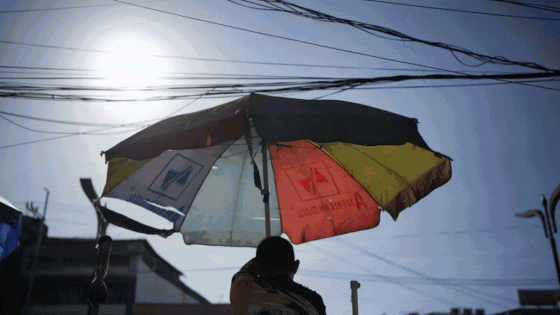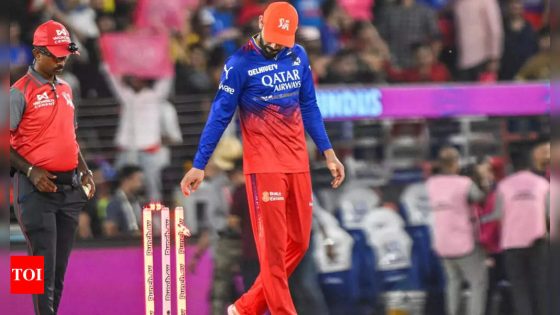The definition of a heat wave varies across regions and is determined by specific temperature thresholds, either in terms of absolute temperature values or departures from the normal range.
Some countries also define heat waves based on the heat index, which takes into account both temperature and humidity levels, or by considering extreme percentiles of recorded temperatures.
What are the criteria for declaring a heat wave?
In India, a heat wave is declared when the maximum temperature of a location reaches or exceeds 40 degree Celcius in the plains and at least 30 degree Celcius in hilly regions.
These temperature thresholds are set to identify conditions that can potentially cause heat-related illnesses and fatalities, especially among vulnerable populations such as the elderly, children, and those with pre-existing health conditions.
How IMD predicts incoming heatwave?
The India Meteorological Department (IMD) forecasts heat waves by conducting a comprehensive synoptic analysis of various meteorological parameters.
IMD utilizes consensus guidance from multiple regional and global numerical prediction models operated by the Ministry of Earth Sciences (MoES), such as WRF, GFS, GEFS, NCUM, UMEPS, and UM Regional.
Furthermore, IMD also incorporates data from international models accessible through bilateral multi-institutional arrangements. By combining the results of these models with the synoptic analysis, IMD can provide reliable predictions of heat wave occurrences across the country.
Health and heatwave
- The adverse effects of Heat Waves on human health can be severe and potentially life-threatening. These effects primarily include dehydration and a range of heat-related illnesses. The symptoms and signs associated with each condition are distinct.
- Heat cramps are characterized by “ederna (swelling) and syncope (fainting) generally accompanied by fever below 39 degree Celsius. Individuals suffering from Heat Cramps may experience swelling in various parts of the body and may faint due to the heat stress.
- These symptoms are usually accompanied by a mild fever.
- Heat Exhaustion, a more serious condition, manifests through fatigue, weakness, dizziness, headache, nausea, vomiting, muscle cramps and sweating.
- People affected by heat exhaustion may feel tired, weak, and dizzy, and may experience headaches and nausea. Vomiting, muscle cramps, and excessive sweating are also common symptoms.
- The most severe heat-related illness is heat stroke, which is characterized by “Body temperatures of 40 degree Celsius or more along with delirium, seizures or coma.
Measures to battle heat
- To minimize the impact of a heat wave, it is crucial to take certain precautions.
- It is advisable to avoid going out in the sun, particularly between 12.00 noon and 3.00 p.m. when the sun’s rays are the most intense.
- It is essential to “drink sufficient water and as often as possible, even if not thirsty” to stay hydrated.
- When going out in the sun, it is recommended to “wear lightweight, light-coloured, loose and porous cotton clothes. Use protective goggles, umbrella/hat, shoes or chappals.”
- During high temperatures, it is best to avoid engaging in strenuous activities, especially outdoors between 12 noon and 3 p.m.
- If travelling, always carry water to prevent dehydration.
- Avoid consuming alcohol, tea, coffee, and carbonated soft drinks, as they can dehydrate the body.
- Avoid high-protein food and refrain from eating stale food.
- If working outside is unavoidable, it is recommended to “use a hat or an umbrella and also use a damp cloth on your head, neck, face and limbs” to keep cool.
- Never leave children or pets unattended in parked vehicles. If you experience any signs of illness or faintness, seek medical attention immediately.
Heatwave and elections
As the Lok Sabha elections continue, many regions across India are experiencing extreme temperatures, with some areas recording highs of 45 degree Celsius. The states of Odisha, West Bengal, Chhattisgarh, Madhya Pradesh, Karnataka and Andhra Pradesh have been particularly affected by the scorching heat. According to the Indian Meteorological Department, a new heatwave is expected to begin in the northwest region, including Punjab, Uttar Pradesh, and Haryana, starting from May 16.
The initial and most extensive phase of the seventh round of voting took place on April 19, during which voters selected their representatives for 102 parliamentary seats. This phase coincided with the onset of the heatwave in various parts of the country.
The voter turnout for this phase was 66 percent, notably lower than the 70 percent recorded in 2019. Although it is challenging to attribute this decrease to a single cause, some analysts have suggested that the extreme heat may have been one of several factors that influenced voter participation.
Source Agencies


